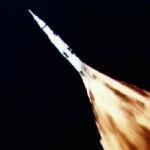When did modern F1 begin?
- This topic has 10 replies, 10 voices, and was last updated 11 years, 1 month ago by
mrgrieves.
- AuthorPosts
- 5th March 2013, 12:36 at 12:36 pm #132773
 Lucas WilsonParticipant
Lucas WilsonParticipantFor me it has to be 1996. ’96 saw the the introduction of the 107 % rule (mainly to get the Forti’s off the grid xD), the cars look basically the same, some cars used V8’s, plus other rules haven’t changed much (apart from the pre-2003 qualiy system).
Feel free to correct me :-D.
5th March 2013, 12:42 at 12:42 pm #228079 Magnificent GeoffreyParticipant
Magnificent GeoffreyParticipantI’d actually agree with that.
5th March 2013, 12:44 at 12:44 pm #228080andae23
ParticipantDepends on how you define ‘modern F1’. From an aerodynamic point of view, I would say 1970 when Lotus introduced the 72. From a sportsman’s point of view, probably 1991 when Schumacher made his debut.
5th March 2013, 13:16 at 1:16 pm #228081 BobParticipant
BobParticipantFrom a business point of view, I’d be inclined to say 1995. That was the year FOM took control of the commercial rights to F1, thereby establishing the political system/hierarchy of teams that could constitute the “modern era”.
5th March 2013, 13:25 at 1:25 pm #228082Matthijs
ParticipantTo me, there are several ‘new eras’ in the history of F1. Like @andae23 mentioned, the early ninetees is a good example. Not only Schumacher (and Hakkinen) debuted, but also great champions as Mansell, Piquet, Senna and Prost retired (or died). After Imola 1994, there were no world champions on the grid! Also Bélastre was succeeded by Max Mosley as president of the FIA. So to me modern F1 started in 1994.
But mid 2000’s is also a watershed. The Schumacher (1)-era ended and Alonso and Raikkonen picked up the glove. Also Hamilton and Vettel debuted.On a technical point of view, I’d say modern F1 started in 1989, the first year without turbo-engines. But you can also pick 1998, the first year with grooved tyres, or 2009, the first year with slicks and a revised aero-package.
5th March 2013, 14:59 at 2:59 pm #228083Cristian
ParticipantI’d say 1968, the year when Jim Clark died and Lotus painted their cars in Gold Leaf’s colors.
6th March 2013, 6:36 at 6:36 am #228084 JourneyerParticipant
JourneyerParticipantThere are a lot of “turning points” in F1’s history. Any of them could be defined as the beginning of the modern era. Take your pick.
1950: The beginning of F1 itself. After all, there have been championships before F1, so F1 in and of itself can be the beginning of the “modern era”.
1958: First season without Fangio in it, first title won by a rear-engined car.
1968: Death of Clark, birth of sponsorship (Gold Leaf Lotus), the Cosworth DFV engine, and aerodynamics with wings.
1978: Aero grip moves ahead of mechanical grip in importance with the birth of ground effect.
1983: First season without Gilles in it, first season after ground effect ban.
1988: Beginning of Prost-Senna rivalry at McLaren.
1994: First season after Prost’s retirement, death of Senna, first title won by Schumacher, last title won by Ford.
2000: Schumacher’s first title with Ferrari.
2003: First major change in points system since the 60s, beginning of parc ferme rule after qualifying.
2007: First season after Schumacher’s first retirement, debuts of Hamilton and Vettel.6th March 2013, 10:49 at 10:49 am #228085Anonymous
Inactive1996.
Safety took a big step up.
Smaller teams set up by someone in a garage who bought an old F3000 car stopped appearing (or not appearing, as was more often the case).
Grid sizes dropped to a more manageable level.
Teams became more professional.
Part-timers with a few bob to spare stopped being able to pay their way into driving for a race or two, only to be replaced by the next one in line 3 races later.
TV coverage started to include live qualifying for each and every race, with extended pre-and-post-race shows (in the UK at least).
Tracks began to get safer.
Countries with governments with a lot of money started having purpose-built tracks made for F1 to visit.
The general aura seemed more professional and consistent, such as sponsorship partners, on-track advertising, the safety and medical cars being the same as every track. More of an organised travelling circus rather than turning up at a track and using whatever Renault Clio they had lying around as a pace car.)Obviously some of this happened after 1996, but I think that was the season that got the ball rolling. The transition was fairly complete by 2000, where smaller team had been bought out by big businesses, there was a stable set of engine manufacturers, the rules were locked down and fairly similar for a good number of years (until ’09 really).
6th March 2013, 11:34 at 11:34 am #228086 Lucas WilsonParticipant
Lucas WilsonParticipantI alway’s thought it was a shame that there were no Official (written) F1 season review’s pre-2004.
I’d love to write them from ’96-’03.
6th March 2013, 13:39 at 1:39 pm #228087DavidS
ParticipantThere’s many different points which you chose, and they would all be somewhat correct.
I would probably say 2006.
Efforts were made to slow down the cars, new engines, more restrictive aero rules.
Cost management was becoming an issue.
Although Schumacher was still racing in 2006, he wasn’t dominating the sport.
Changes were made to a lot of the sporting regulations, particularly qualifying.
The current crop of champions (except Schumacher, who was retired for a few years) won their championship in the next few years. Alonso (sealed his second one in 2006), Raikkonen, Hamilton, Button, Vettel.6th March 2013, 17:09 at 5:09 pm #228088mrgrieves
ParticipantThis could be defined in several ways i guess
Im going on the period of F1 i’ve studied and seen and spllitting it between cars and F1
Cars
1968/70 – 1978 – Lotus’s revolutionary cars 49+72 with Innboard breaks, radiators in the side pod. Air box and fixed wing suspensions
1978-81: Ground effect end of really dangerous cars
1982-89:Turbo and Mclaren era. Much more cash stars coming into the sport influencing design
1990-1993: – Elecrtic aids and Williams computer controlled domination
1994-1997 – Computer Aids gone, The old Guard of drivers left cars get really wide!
1998-2008 – Ferrari V McLaren with the final saftey changes from Senna’s accident come through
2008-Present – Major focus on the rear of the car defuses and exaust gasses as designers get desprite to find progress with the strict design rulesF1 in general
1970-1974 – Multi event drivers – Le Mans F2. Sponsers take over cars as the final national team colors leave.
1974-1988 – f1 still under the radar as drivers focus on F1 alone. Bernie tightens grip on power
1988-1993 – Sport grows with the strongest driving pool of drivers from huge countrys dragging in fans
1994-95 – Schumacher and hill battle drags in massive audience F1 becomes far more commercial
96-present. I’d say its not changed to much in the last 20 years. Much less european races and the side by side driving is less hard but that apart very similar sport - AuthorPosts
- You must be logged in to reply to this topic.



